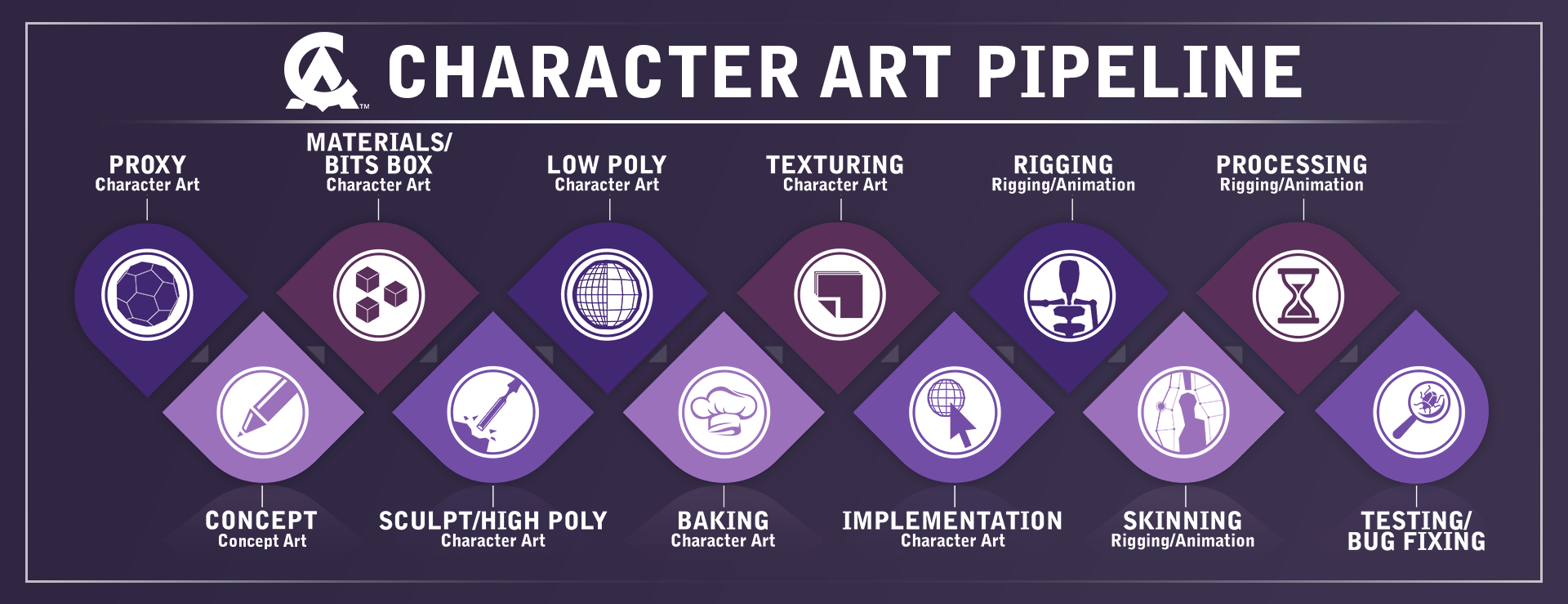Creative Chronicles: Character Art
June 18 2019 | Legacy Project
Creative Chronicles brings together key insights, information and statistics from the experts at Creative Assembly. We hope this will inspire students and those considering a career in game development.
This edition of Creative Chronicles focuses on Character Art.
A Character Artist’s overarching role is to create efficient game-ready 3D characters and creatures; a high level of visual and technical scrutiny will be expected of your work so that it may be properly displayed in real-time game engines and held up to the artistic quality expected from players in modern video games.
The term “character” covers living or automatous creatures that the player interacts with in some way such as playable characters, creatures, monsters, robots and NPCs. A character artist’s job is to sculpt, model, and texture these creatures (including any clothing/armour/weapons they use) based on the designs and suggestions given to them by a concept artist. These models are then passed on to riggers who develop skeletons for the characters, and then on to the animators who make them move and bring them to life.
Character artists typically spend a lot of time sculpting, modelling, and detailing in digital software packages before using industry standard techniques to turn high-polygon sculpts and models into low-polygon game-ready textured meshes. As a character artist you are responsible for fully understanding the character art pipeline, including high/low poly modelling, baking theory, texturing, topology theory and workflow optimisation.

BEST PRACTICE IN AAA CHARACTER ART DEVELOPMENT
Character artists need not only be industry-leading sculptors and modellers, but they need to understand how to properly adhere to the technical limitations placed upon them by modern game engines. We have, as an industry, made leaps and bounds in terms of graphical and visual fidelity, yet everything created for game engines should always be efficient as it can possibly be, to ensure a high frame-rate and smooth gaming experience for the player.
A good character artist needs to understand the technical aspects of the role. This can include bug fixing, vast knowledge of tools and software to troubleshoot problems, proper normal map generation and baking theory, deep understanding of the preferred game engine, and keeping an organised workspace/file repository.
Artistic knowledge is a must and a mastery of anatomy should be seen as one of the primary goals of a character artist. However, other artistic methodologies and rules should not be ignored; a character artist should be a master of other artistic principles such as form, colour and flow, and use their understanding of these rules to make informed decisions when developing their art.
WHAT WE LOOK FOR IN CHARACTER ART PORTFOLIOS
The most common issue we come across with character art portfolios is only showing Zbrush sculpts. This only shows 50% of the workflow and while important, it is crucial to show a game-ready character from blockout to asset completion.
Show the rest of your workflow, how you handle fur/hair, and how well you can adapt to physically based texturing. Showing breakdown shots of your character helps demonstrate your understanding of the game development pipeline, from a concept artist handing over the initial concept, to game implementation. Go into detail showcasing different angles, highlighting different elements in more detail such as weaponry, and include both high poly assets and beauty shots in dynamic poses.
WHAT TO EXPECT AT CA
We have 18-character artists at Creative Assembly. We use a range of tools and techniques in development, focusing on Zbrush, 3ds MAX, Photoshop, dDO and NDO painter and MD5.
On Total War, we focus on anatomy, cloth, hard surface armour and weapons and creatures. We don't have dedicated texture artists, hair artists or sculptors. It’s crucial to us as a studio that our artists take creative ownership and accountability for each character they produce, with our character artists being responsible from initial sculpt all the way through to implementation in the game.
